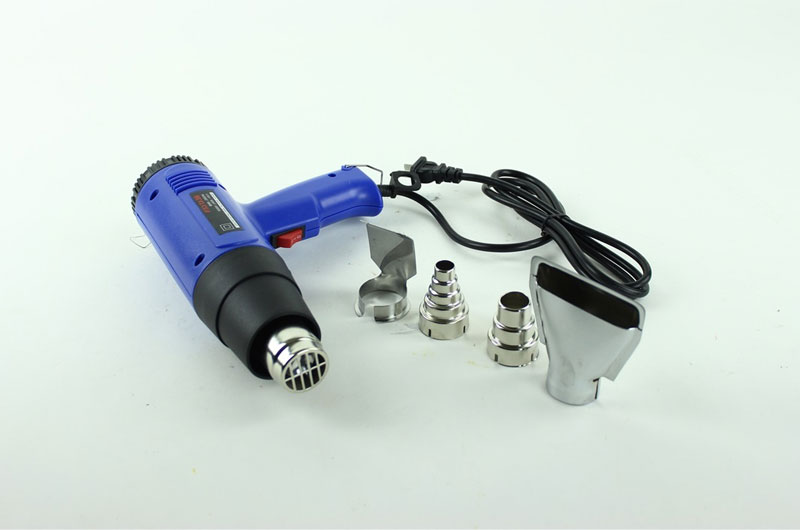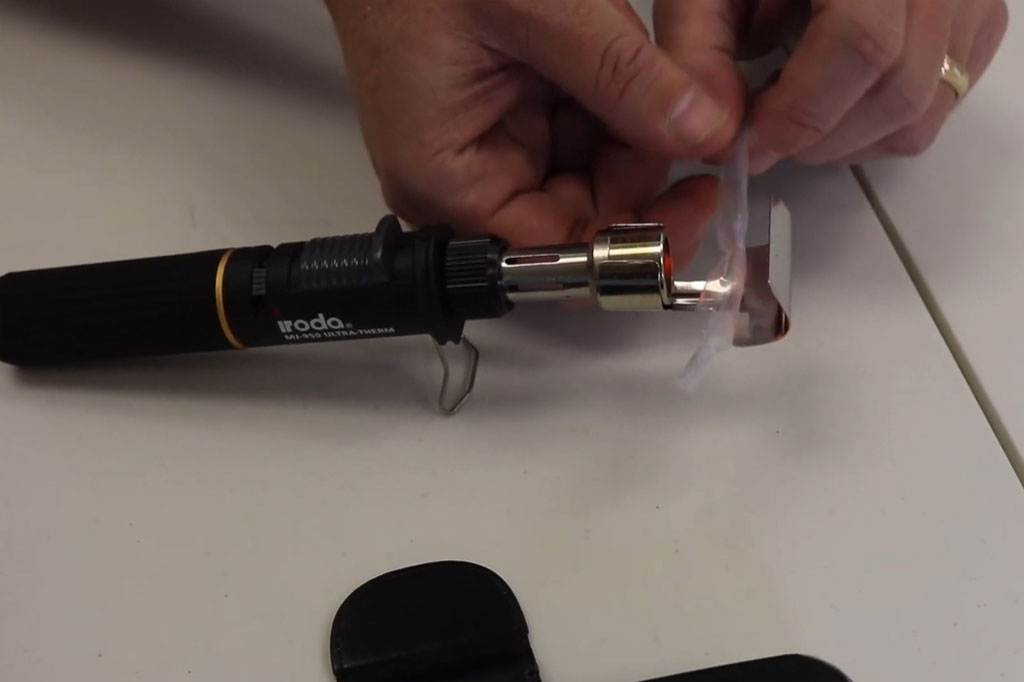Shrinking PTFE tubing requires specific heat sources due to its high shrink temperature – typically between 320°C and 360°C (608°F to 680°F).
Selecting the correct heat source ensures consistent results, prevents damage to components, and maximizes product lifespan.
Why Heat Source Matters for PTFE Shrinking Tubing?
PTFE heat shrinking tubing is not like polyolefin or PVC shrink tubing, which shrinks at relatively low temperatures (typically under 150°C). PTFE’s chemical structure is extremely stable and requires significantly higher temperatures to activate its shrink memory.
Using inadequate or inappropriate heat sources can lead to uneven shrinking, incomplete recovery, material degradation, or even damage to surrounding components.
Therefore, it is essential to use a heat source that:
- Reaches and maintains high temperatures (up to 360°C or higher).
- Offers controlled and even heat distribution.
- Minimizes the risk of scorching or burning.
- Provides directional airflow when needed.
1. Industrial Heat Guns (High-Temperature Models)

Best for: Controlled manual shrinking in production or repair environments.
High-temperature heat guns are the most commonly used tools for shrinking PTFE tubing. They offer versatility, portability, and come in a range of power levels.
Key features to look for:
- Temperature capability of at least 360°C (680°F).
- Adjustable temperature control.
- Interchangeable nozzles for directing airflow.
- Consistent airflow rate (measured in liters/minute or CFM).
Advantages:
- Easy to use and portable.
- Suitable for small-scale or on-site applications.
- Can be used on irregular shapes or complex assemblies.
Examples:
- Steinel HG 2620 E (up to 700°C).
- Master Appliance Proheat Series.
- Leister Triac ST (industrial-grade hot air tool).
2. Convection Ovens
Best for: Uniform shrinking of multiple components or tubing sections at once.
Convection ovens provide a controlled environment to evenly heat PTFE tubing. They are ideal for batch processing, especially in production lines or quality-controlled settings.
Key features to look for:
- Temperature range of 150°C to 400°C.
- Even heat distribution with forced air circulation.
- Digital temperature control and timer.
- Safety features such as over-temperature protection.
Advantages:
- Uniform heating with minimal risk of overheating.
- Hands-free operation allows higher throughput.
- Ideal for precise shrinking of medical tubing, wire harnesses, or sensor covers.
Limitations:
- Not suitable for in-field work.
- Slower warm-up and cooling time compared to other methods.
Examples:
- Blue M or Memmert lab ovens.
- Despatch convection ovens.
- Yamato or Binder temperature-controlled ovens.
3. Infrared Heat Tunnels
Best for: High-volume, automated production environments.
Infrared (IR) heat tunnels use radiant energy to heat and shrink tubing. Commonly built into conveyor systems, they are well-suited for continuous operations in manufacturing environments.
Key features to look for:
- Adjustable IR heating elements with zoned temperature control.
- Conveyor speed and distance control.
- Cooling zones for safe handling post-shrink.
Advantages:
- Fast, efficient, and consistent,
- Reduces manual labor and improves productivity.
- Excellent for long tubing or repeated product lines.
Limitations:
- High initial setup cost,
- Limited flexibility once set for specific product sizes.
Examples:
- BriskHeat IR tunnels,
- CEL Mac Infrared Shrink Systems,
- Thermcraft IR heating systems.
4. Hot Air Reflow Systems
Best for: Shrinking PTFE tubing on temperature-sensitive assemblies like PCBs.
Hot air reflow systems, typically used for soldering in electronics manufacturing, can be adapted to shrink PTFE tubing in high-precision applications.
Advantages:
- Controlled thermal profiling,
- Non-contact heat application,
- Excellent for delicate or miniature components.
Limitations:
- More suitable for specialized electronic or medical use.
- High cost and limited general-purpose flexibility.
Examples:
- Heller Industries reflow ovens,
- BTU Pyramax systems.
5. Open Flame (Butane or Propane Torches)
Best for: Emergency or on-site field repairs when no other tool is available.
Using an open flame is not recommended for regular shrinking of PTFE tubing due to the difficulty of controlling temperature and flame spread. However, in field repairs or hard-to-reach installations, a small butane or propane torch may be used with caution.
Cautionary Guidelines:
- Always keep the flame moving to avoid burning or uneven shrinking.
- Maintain a safe distance (several inches) from the tubing.
- Use flame diffusers or shielding when possible.
- Monitor closely to prevent component damage.
Limitations:
- High risk of scorching or deformation.
- Not suitable for use near flammable materials or electronics.
Key Considerations When Choosing a Heat Source
When deciding on the best heat source for shrinking PTFE tubing, consider the following factors:
- Shrink Temperature Requirement: Ensure the tool can reliably reach at least 360°C to fully activate PTFE shrink memory.
- Application Scale: For small jobs or prototypes, a heat gun may be sufficient. For production, an oven or IR tunnel may be more efficient.
- Component Sensitivity: Use indirect heat sources (oven, hot air) if the surrounding components are heat-sensitive.
- Precision and Uniformity: For complex shapes or uniformity, controlled environments like ovens or reflow systems are preferable.
- Work Environment: Portable heat guns are ideal for fieldwork, while ovens and tunnels suit factory settings.
Best Practices for Shrinking PTFE Tubing
- Preheat components if needed: Large metal components can act as heat sinks and prevent full shrinkage.
- Apply heat gradually: Avoid rapid temperature spikes to prevent tube damage.
- Rotate the assembly: Ensure all sides of the tubing are evenly exposed to heat.
- Monitor for overheating: PTFE tubing may discolor or emit fumes if overheated.

